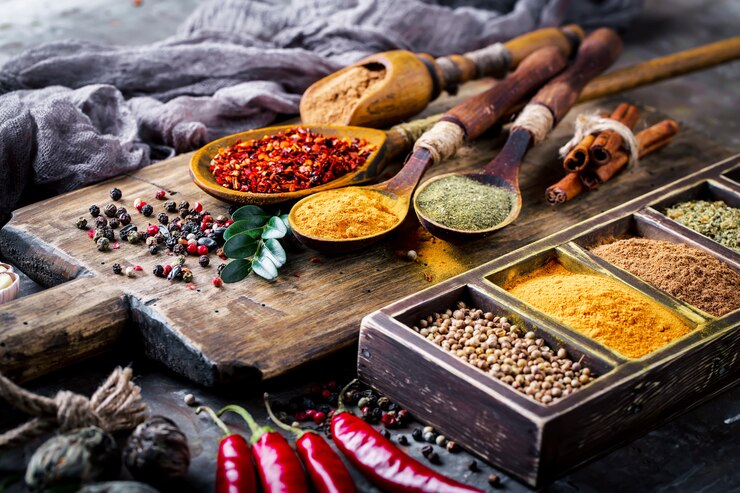In the rich tapestry of Turkish cuisine, few terms evoke as much intrigue and appreciation as “iekşi.” This term, which translates to “sour,” encapsulates a wide array of flavors, ingredients, and culinary practices that define not only dishes but also the very essence of Turkish culture. In this article, we will explore the significance of iekşi in Turkish gastronomy, its historical roots, its varied applications in cooking, and how it shapes social and communal experiences.

Iekşi refers primarily to sour flavors found in various Turkish dishes. The term encompasses a range of ingredients, including fermented products, fruits, and certain herbs that impart a tangy, acidic taste to food. In Turkish cuisine, iekşi plays a crucial role in balancing flavors, enhancing the overall dining experience, and showcasing the diversity of the country’s culinary landscape.
Turkish cuisine is celebrated for its harmonious balance of flavors—sweet, salty, bitter, and sour. The inclusion of iekşi contributes to this complexity, offering a contrast that elevates many traditional dishes. Whether it’s a tangy yogurt, a sour pomegranate molasses, or pickled vegetables, the elements of iekşi create a symphony of taste that engages the palate and encourages exploration.
The use of sour flavors in Turkish cooking has deep historical roots, reflecting the country’s agricultural practices, climate, and cultural exchanges over centuries. The agricultural practices in various regions of Turkey have led to the cultivation of specific fruits and vegetables that contribute to the sour profile of many dishes.
Historically, fermentation was a common preservation method, allowing communities to store food for longer periods. Foods like pickles, yogurt, and sourdough bread emerged from this practice, utilizing the natural souring process that occurs during fermentation. These fermented foods not only provided sustenance but also offered health benefits, promoting gut health and enhancing digestion.
Turkey’s diverse geography has played a significant role in shaping its culinary traditions. The country is a bridge between Europe and Asia, which has facilitated the exchange of ingredients and cooking techniques over time. Regions such as the Aegean, Marmara, and Anatolia boast distinct sour elements in their cuisines, influenced by local produce and climate. This diversity enriches the concept of iekşi, making it an integral part of regional identities.
The world of iekşi is vast and varied, with numerous ingredients contributing to the sour flavors in Turkish cuisine. Here are some of the most notable:
Yogurt, or “yoğurt,” is perhaps the most iconic example of iekşi in Turkish cooking. Made from fermented milk, it serves as a base for many dishes, from mezes to main courses. The tangy flavor of yogurt enhances the richness of other ingredients and provides a refreshing contrast in dishes like cacık (a yogurt-based salad) and döner kebab.
Sumac is a spice derived from the dried and ground berries of the sumac plant. It imparts a vibrant, tart flavor that is a staple in Turkish cuisine. Sprinkled over salads, kebabs, or rice dishes, sumac adds a distinct sour note that brightens the overall flavor profile.
A staple in Turkish kitchens, pomegranate molasses is a thick, syrupy reduction of pomegranate juice. Its sweet-sour flavor makes it a popular ingredient in salads, marinades, and sauces. Pomegranate molasses exemplifies the balance of sweet and sour that characterizes many Turkish dishes.
Various types of vinegar, including grape vinegar and apple cider vinegar, are used in Turkish cuisine. These vinegars add acidity and depth to dressings, marinades, and pickles, enhancing the overall flavor of dishes.
Pickles are an essential part of the Turkish dining experience. Often served as a meze or accompaniment, pickled vegetables like cucumbers, carrots, and cabbage provide a crunchy, sour contrast to richer dishes. They are a testament to the fermentation tradition and the importance of preserving seasonal produce.
The essence of iekşi can be seen in many iconic Turkish dishes, each showcasing the balance of flavors and the culinary traditions of the region.
Kısır is a bulgur wheat salad that incorporates tomatoes, parsley, and mint, dressed with olive oil and pomegranate molasses. The sourness from the molasses elevates the dish, making it refreshing and vibrant. It’s often served as part of a meze platter, embodying the communal spirit of Turkish dining.
Cacık is a yogurt-based dish that combines yogurt with diced cucumbers, garlic, and fresh herbs. It is a quintessential representation of iekşi, as the tangy yogurt is complemented by the coolness of the cucumbers and the brightness of herbs. Cacık is a popular side dish, especially during hot summer months.
Although commonly associated with Greek cuisine, tzatziki has its roots in Turkish cuisine as well. Made with yogurt, cucumber, garlic, and a splash of vinegar, this dish captures the essence of iekşi while highlighting the versatility of yogurt in the culinary repertoire.
Dolma, or stuffed grape leaves, are often served with a side of yogurt drizzled with lemon juice or vinegar. The tartness of the yogurt complements the rich filling of rice and spices, providing a balanced flavor profile that epitomizes the principles of Turkish cooking.
Kebabs are a staple of Turkish cuisine, and the addition of sumac brings a delightful sour note to grilled meats. Whether it’s a doner kebab or a shish kebab, the sprinkle of sumac enhances the flavor, making the dish more complex and enjoyable.
Beyond its culinary applications, iekşi carries cultural significance in Turkey. It represents more than just a flavor; it embodies the connection between food, family, and tradition.
In Turkish culture, food is a central element of social gatherings. The presence of iekşi in meals encourages sharing and conversation, as dishes featuring sour flavors are often served as part of a larger spread. This communal dining experience fosters relationships and creates lasting memories.
Sourness in Turkish cuisine can also symbolize resilience and adaptability. Just as sour flavors balance richness, the ability to navigate challenges and embrace life’s complexities is reflected in the culinary tradition. The incorporation of iekşi serves as a reminder of the beauty found in contrast and diversity.
The use of iekşi in Turkish cuisine is a testament to the country’s rich culinary heritage. It showcases the influence of various cultures, regional practices, and historical events that have shaped the way food is prepared and enjoyed. Preserving these traditions is vital for future generations to appreciate the depth of their culinary history.
Incorporating iekşi into your cooking doesn’t require extensive knowledge of Turkish cuisine. Here are some simple ways to embrace the sour flavors in your everyday meals:
Use yogurt as a base for dressings, marinades, or dips. Try mixing yogurt with herbs and spices to create a tangy dip for vegetables or grilled meats. You can also drizzle yogurt over roasted vegetables for an added layer of flavor.
Sprinkle sumac over salads, roasted vegetables, or grains for an instant flavor boost. Its tartness will elevate the dish and introduce an element of surprise.
Pomegranate molasses can be used to dress salads, glaze meats, or drizzle over grain dishes. Its sweet-sour flavor pairs well with various ingredients, adding depth to your culinary creations.
Try your hand at pickling vegetables at home. Simple brines can be made with vinegar, water, and spices. Pickles add a delightful crunch and sourness to sandwiches, burgers, or as snacks.
Experiment with different types of vinegar in your cooking. Use them in salad dressings, marinades, or sauces to bring a vibrant acidity to your dishes.
Iekşi is more than just a term for sourness; it embodies the heart and soul of Turkish cuisine. By understanding its significance, history, and applications, we can appreciate the intricate balance of flavors that characterize this vibrant culinary tradition. From tangy yogurt to zesty pomegranate molasses, iekşi enriches our meals and our cultural experiences.
